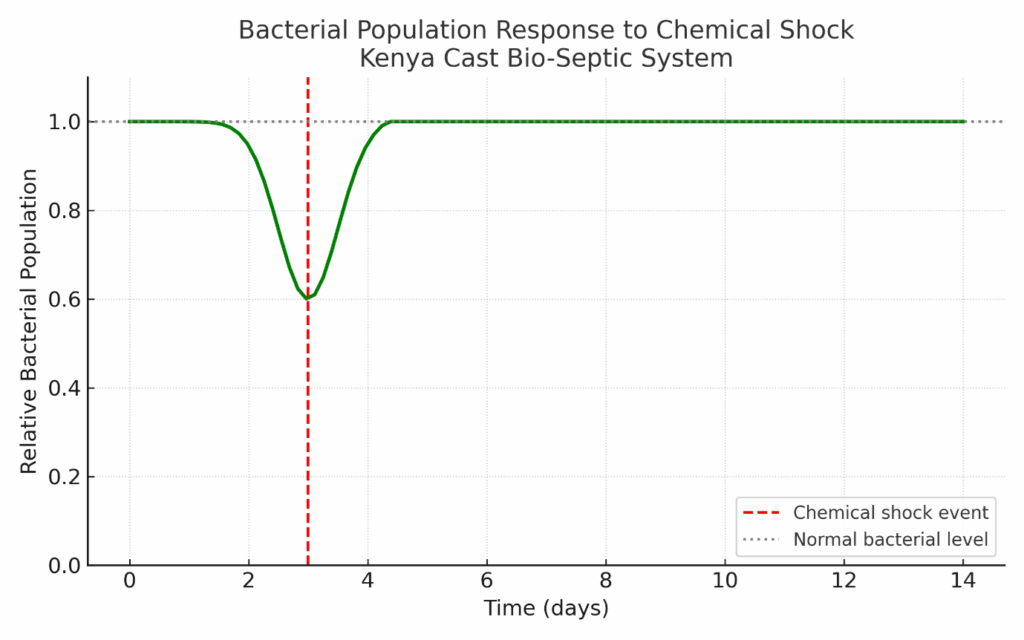Kenya Cast Insights
How Kenya Cast Systems Cultivate and Protect Beneficial
Kenya Cast’s systems do not “create” bacteria from nothing; instead, bacteria already present in human waste and the environment naturally exist in the system.
What our bio-septic tanks do is create the right conditions for the right bacteria to thrive, allowing them to break down waste efficiently.
Here’s how it works step by step:
- Wastewater enters the system
Black water (toilet waste) flows into the sealed tank. This already contains naturally occurring bacteria from human intestines. - Oxygen-free (anaerobic) stage
Since the tank is constantly filled with water, oxygen levels are very low. Anaerobic bacteria multiply and start breaking down solids, reducing sludge volume and producing simpler organic compounds. - Aerobic treatment stage
In the later chambers, the system introduces air via the design features of baffles and inspection chambers. This encourages aerobic bacteria — which are even more efficient at removing pathogens and reducing smell — to thrive on the surfaces inside the tank. - Bacterial colonies self-sustain
Because waste continuously enters the tank, the bacteria have a constant food supply. No chemicals are needed; the ecosystem inside the tank keeps itself balanced. - Pathogen reduction
By the time the effluent leaves the tank, the “bad” disease-causing bacteria have been outcompeted and destroyed by the “good” treatment bacteria, leaving water that is much safer for discharge or reuse.
It’s less about making bacteria and more about cultivating a healthy bacterial workforce inside a controlled environment.
Maintaining Bacterial Health Despite Chemical Exposure
How Kenya Cast Systems Survive Bleach and Detergents.
- Multiple treatment chambers
- The tank isn’t one big open space. Wastewater flows through a series of compartments.
- If chemicals enter, they get diluted and partly neutralised in the first chamber before reaching the main bacterial colonies in the later stages.
- High bacterial density
- The rough concrete surface on the inside of the tank provides a massive surface area for bacteria to attach to.
- Even if some bacteria die off from a sudden chemical shock, the colonies are so dense that the surviving ones quickly repopulate.
- Continuous “seeding” from incoming waste
- Every time fresh wastewater enters, it brings new bacteria from human waste.
- This constant replenishment means the system can bounce back from chemical disruption in a matter of days.
- Biofilm protection
- Bacteria in the system form a slimy biofilm that clings to surfaces.
- This biofilm shields them from short-term chemical exposure — the way moss can survive in bad weather.
- Flow buffering
- The tank holds enough volume that chemicals are heavily diluted by the time they spread through the system, reducing the kill effect.
In short, Kenya Cast tanks don’t rely on fragile lab cultures — they work with robust, naturally occurring bacteria that can take a hit and recover quickly.

